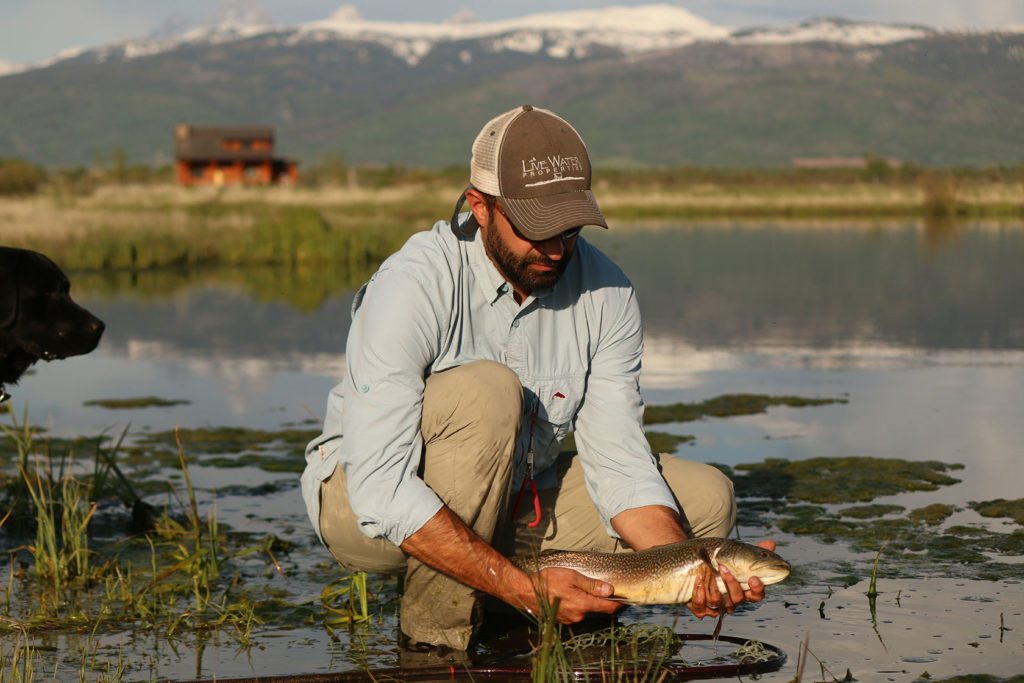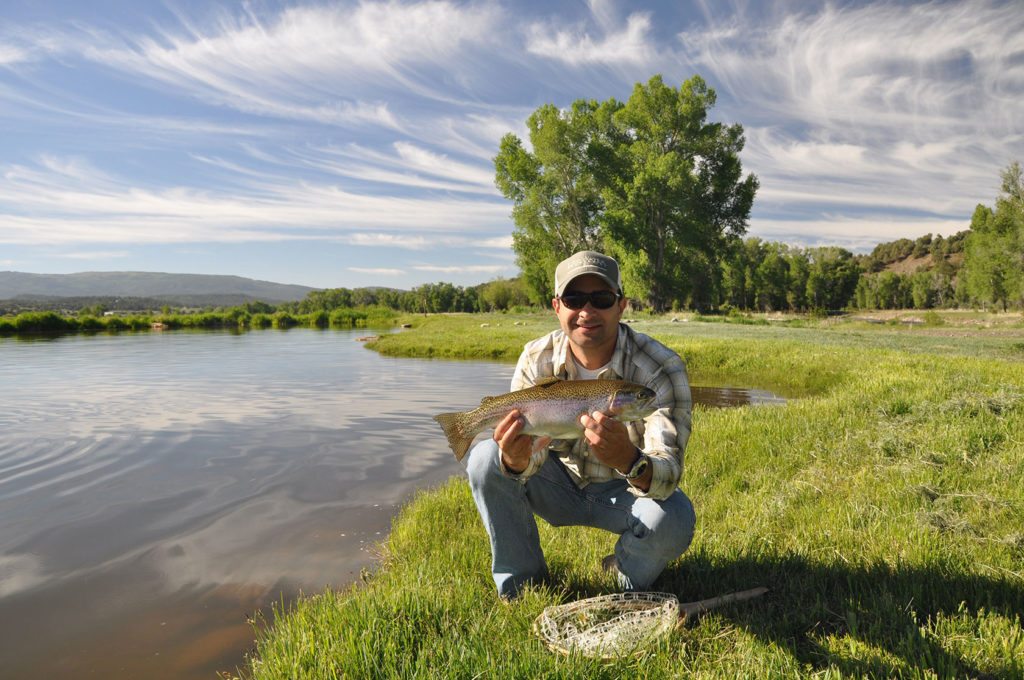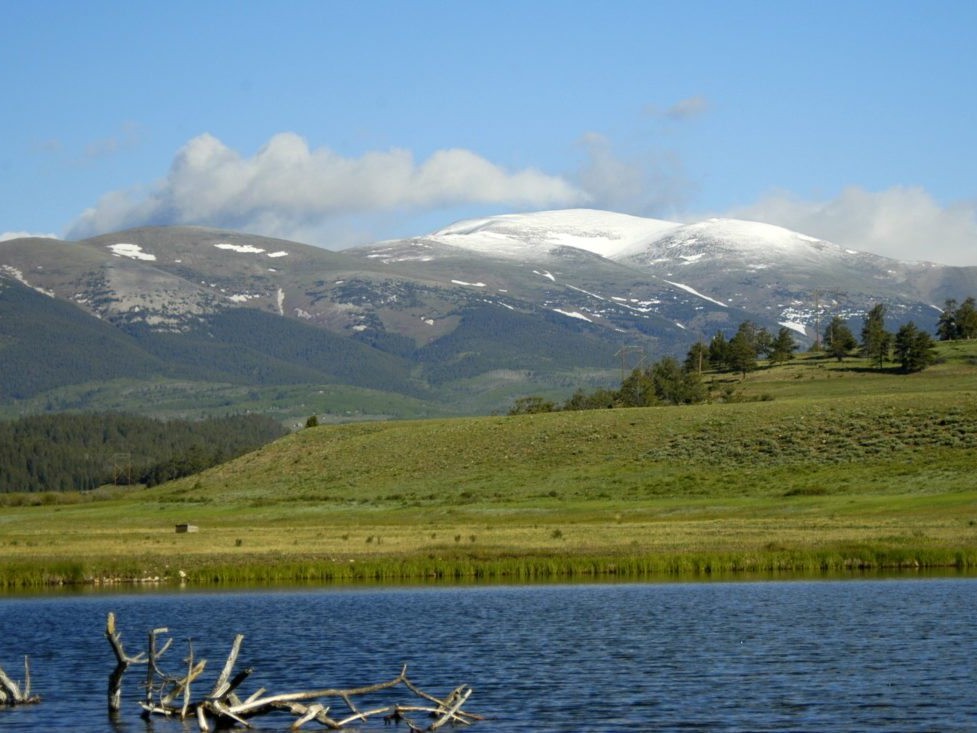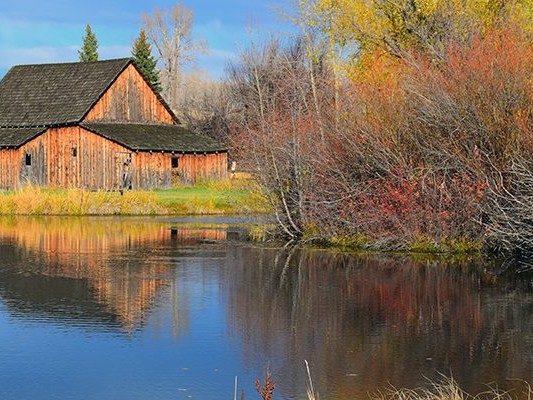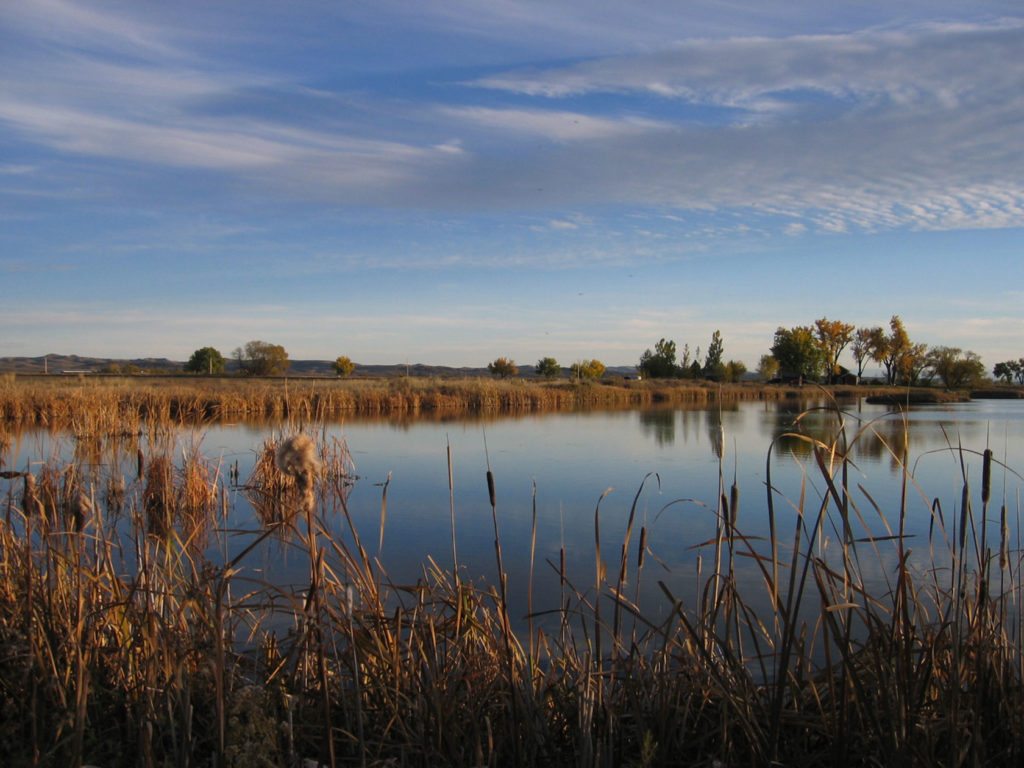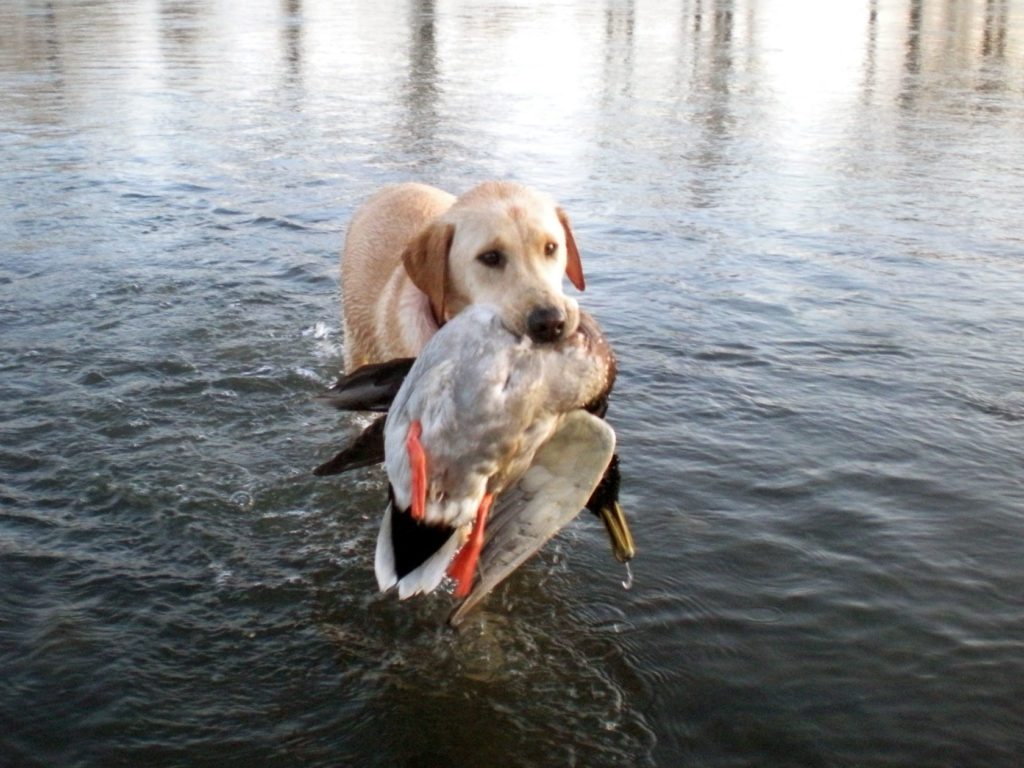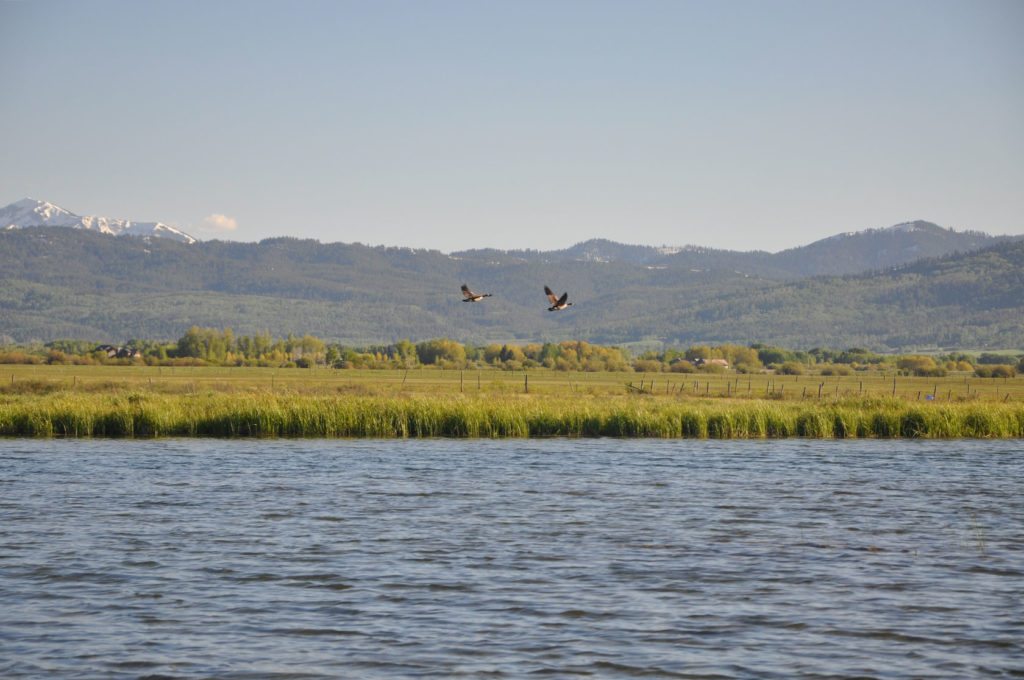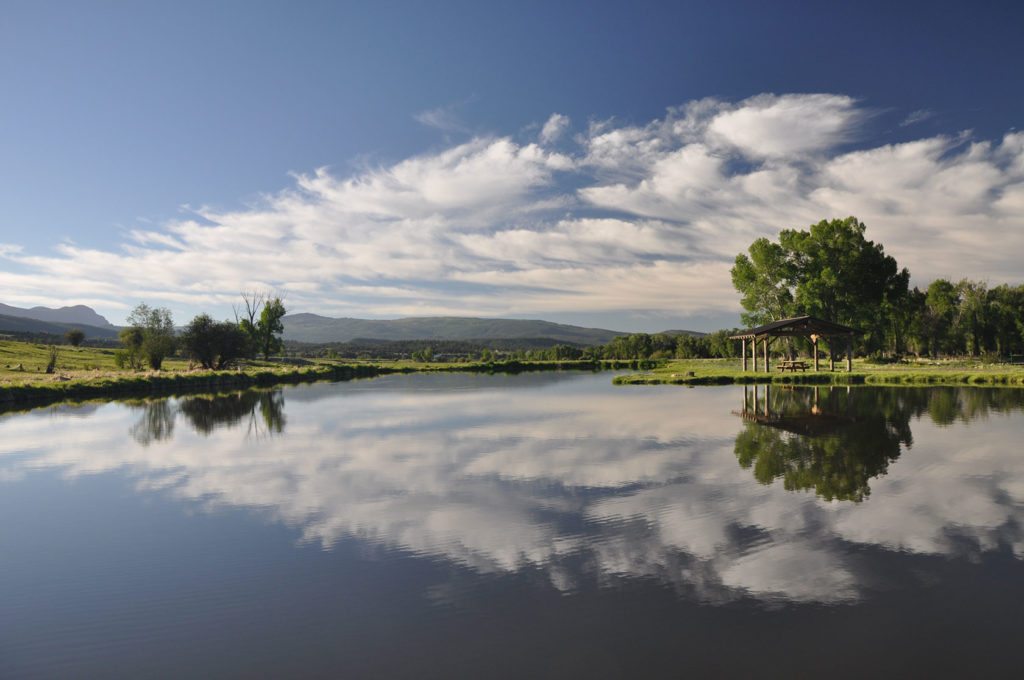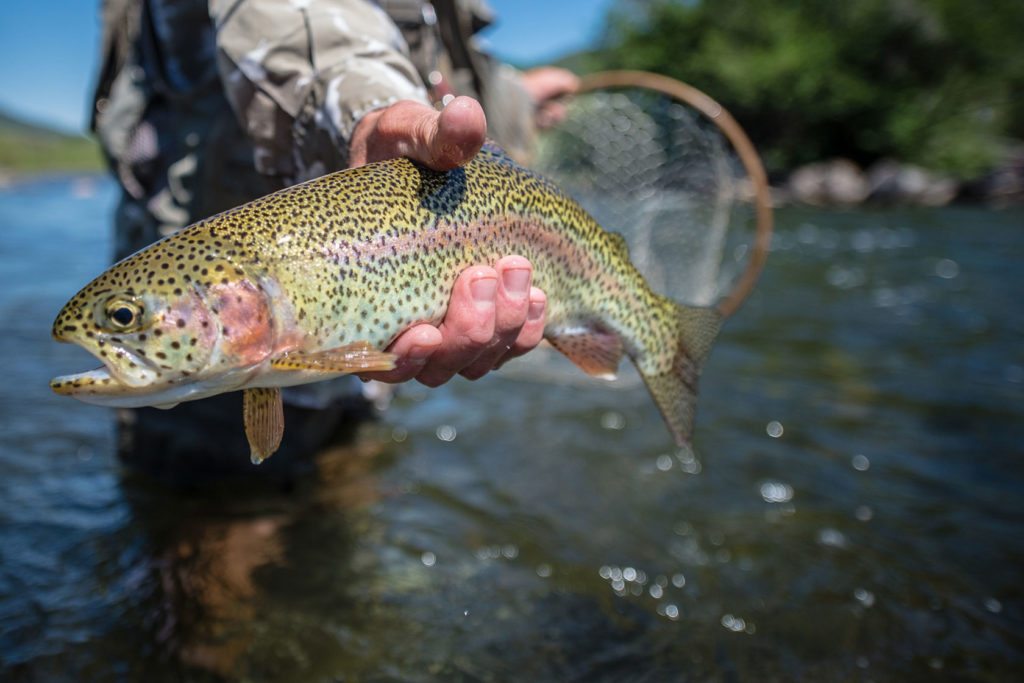Part Two: Streams, Ponds and Lakes, Wetlands
Fluvial restoration usually entails a combination of bank stabilization techniques to curtail or prevent existing or potential erosion issues; creating superior fisheries habitat by engineering areas of riffles, runs and holding water that incorporate protective structure; and sometimes even increasing the velocity of existing flow. Erosion problems generally stem from bank instability due to natural runoff events and/or natural or man-related degradation of the riparian corridor. Remedies often include rip-rapping banks with rock or logs to increase stability, and reseeding exposed banks with native grasses, bushes, trees and willow species. Excavation of the existing stream channel can create a complex of necessary habitat regimes for trout, including feeding areas, spawning gravel, and pools complete with rock and wood structure for cover. In the case of spring creeks, the absence of regular “flushing flow” events associated with annual runoff periods can eventually lead to siltation and over-widening of the channel. Both these circumstances generally contribute to an increase in water temperature and lack of holding water for trout. A narrowing of the channel can provide deeper water and protective cover for fish, and also increase the velocity of flow, which usually results in cooling the water temperature and preventing future silt build-up.
Creating ponds and lakes can lead to enjoyable stillwater fishing opportunities, provide nesting and feeding habitat for waterfowl, and create an associated riparian area that is attractive to a myriad of upland bird and both game and non-game species of wildlife.
Ponding sources can vary from springs, drilled wells, existing groundwater percolation and even offsite – where creek flow is diverted through a pond or lake, then channeled back to the source. Thoughtful planning considers the natural terrain of a property to determine the best location for a pond or lake, and factors in the importance of creating a diverse lake bed environment where balanced proportions of shallow weed beds for food production and adjacent deep water areas for shelter provide a fertile environment conducive to a productive fishery
Wetlands and marsh preservation is key in maintaining the overall health of a property. These areas can be exceedingly important in naturally controlling erosion and flooding events on a property. The additional benefit centers on wildlife; everything from ducks and pheasants to muskrats, beavers, mink, foxes and deer utilize the wetlands ecosystem for nesting, bedding, feeding and cover habitat.
Continue Reading: Part 3 Agricultural and Range Options


